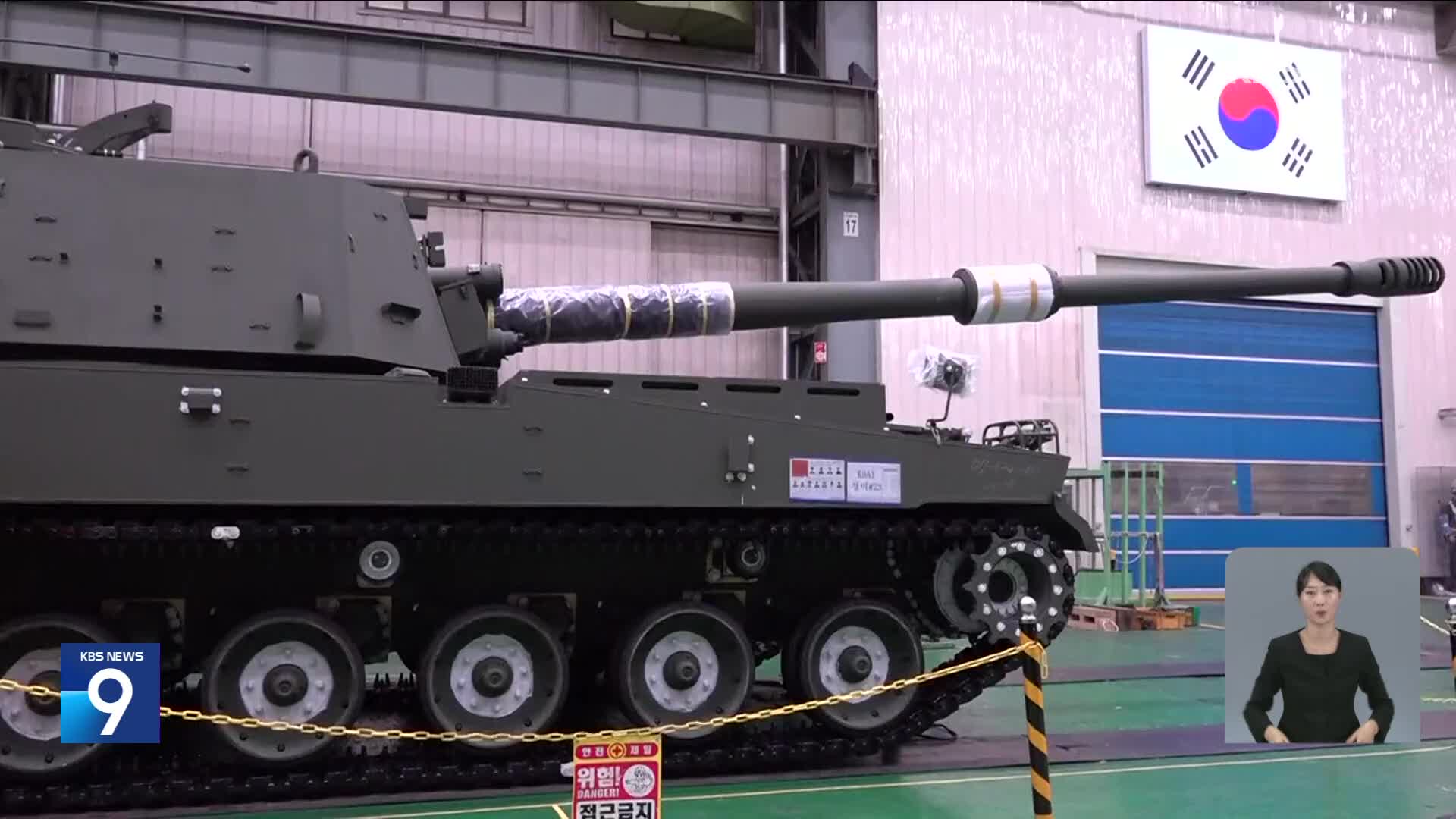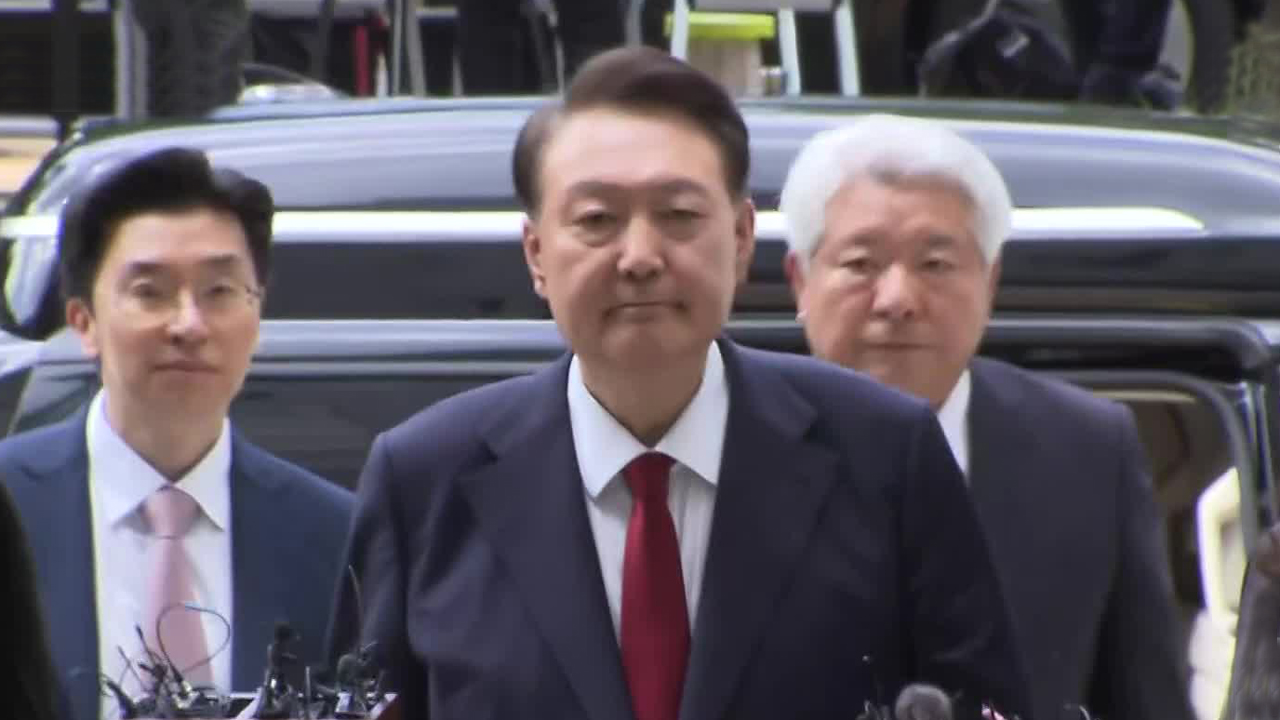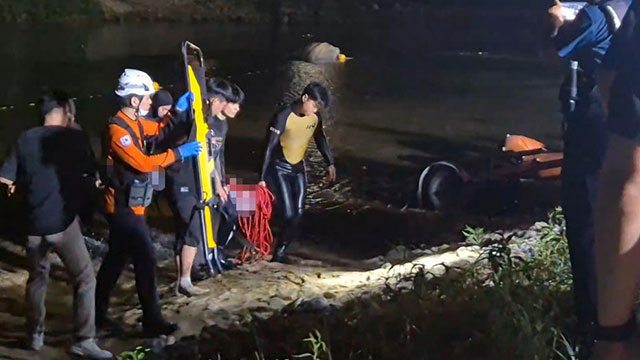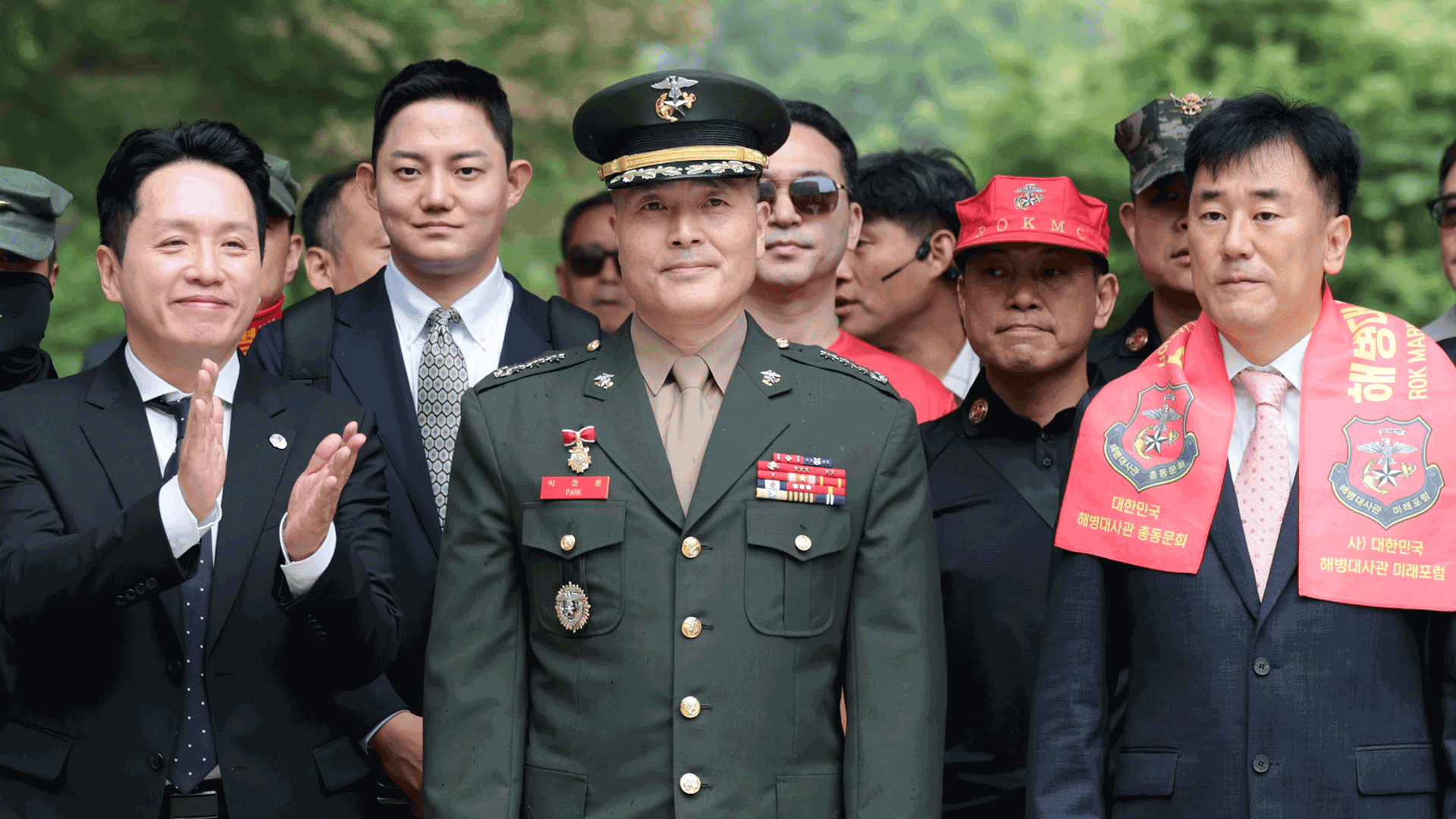[Anchor]
At the time of the outbreak of the Korean War, we were a country that couldn't even properly produce a single rifle.
We developed the 'Korean-style rifle' by imitating foreign firearms, but due to poor industrial standards, it did not lead to mass production.
About 20 years later, we began exporting ammunition for rifles, and now, 50 years later, we are exporting high-quality weapons such as tanks, self-propelled artillery, attack aircraft, as well as combat ships and submarines to the world.
We have now surpassed a cumulative defense export amount of 100 trillion won, establishing ourselves as one of the top 10 defense exporting countries in the world.
However, our global market share is only around 2%, indicating that we still have a long way to go. Conversely, this also suggests that there is significant potential.
Because of this, existing defense exporting countries are putting up considerable resistance.
Reporter Jo Hye-jin reports on the opportunities and threats facing our defense industry, as well as strategies for overcoming them.
[Report]
The largest buyers of our weapons are Poland, followed by the Philippines and India.
All of these countries are currently in a state of geopolitical tension and need weapons that can be deployed immediately, which is why they chose K-defense, emphasizing quick delivery and price competitiveness.
With the unstable international situation, the trend of increasing defense spending worldwide is intensifying competition.
In fact, while the K-2 tank was successfully exported to Poland, it lost out to Germany's Leopard 2 in Norway.
Despite evaluations that it excelled in performance and price, including mobility in the field, it is analyzed that Norway found it difficult to replace the tanks it was already operating.
To leverage the 'lock-in effect,' where once a specific weapon is used, it is difficult to switch to another, we must also focus on continuous performance improvements and after-sales services such as maintenance.
[Jang Won-jun/Professor of Defense Industry Convergence at Jeonbuk National University: "Weapons are not something you use and throw away. So over a 20 or 30-year lifecycle, the aftermarket market is large and is a very important industry."]
Moreover, in Europe, where tensions are rising, countries like Germany and France are emphasizing regional production, competing in bids from a more advantageous position than ours.
[Choi Gi-il/Professor of Military Studies at Sangji University: "The competitive advantage we had can be sufficiently surpassed by other competing countries, so we cannot be complacent here."]
Therefore, experts advise that we need to enhance our strategy to establish local factories and use them as bases to target neighboring countries.
This is KBS News, Jo Hye-jin.
At the time of the outbreak of the Korean War, we were a country that couldn't even properly produce a single rifle.
We developed the 'Korean-style rifle' by imitating foreign firearms, but due to poor industrial standards, it did not lead to mass production.
About 20 years later, we began exporting ammunition for rifles, and now, 50 years later, we are exporting high-quality weapons such as tanks, self-propelled artillery, attack aircraft, as well as combat ships and submarines to the world.
We have now surpassed a cumulative defense export amount of 100 trillion won, establishing ourselves as one of the top 10 defense exporting countries in the world.
However, our global market share is only around 2%, indicating that we still have a long way to go. Conversely, this also suggests that there is significant potential.
Because of this, existing defense exporting countries are putting up considerable resistance.
Reporter Jo Hye-jin reports on the opportunities and threats facing our defense industry, as well as strategies for overcoming them.
[Report]
The largest buyers of our weapons are Poland, followed by the Philippines and India.
All of these countries are currently in a state of geopolitical tension and need weapons that can be deployed immediately, which is why they chose K-defense, emphasizing quick delivery and price competitiveness.
With the unstable international situation, the trend of increasing defense spending worldwide is intensifying competition.
In fact, while the K-2 tank was successfully exported to Poland, it lost out to Germany's Leopard 2 in Norway.
Despite evaluations that it excelled in performance and price, including mobility in the field, it is analyzed that Norway found it difficult to replace the tanks it was already operating.
To leverage the 'lock-in effect,' where once a specific weapon is used, it is difficult to switch to another, we must also focus on continuous performance improvements and after-sales services such as maintenance.
[Jang Won-jun/Professor of Defense Industry Convergence at Jeonbuk National University: "Weapons are not something you use and throw away. So over a 20 or 30-year lifecycle, the aftermarket market is large and is a very important industry."]
Moreover, in Europe, where tensions are rising, countries like Germany and France are emphasizing regional production, competing in bids from a more advantageous position than ours.
[Choi Gi-il/Professor of Military Studies at Sangji University: "The competitive advantage we had can be sufficiently surpassed by other competing countries, so we cannot be complacent here."]
Therefore, experts advise that we need to enhance our strategy to establish local factories and use them as bases to target neighboring countries.
This is KBS News, Jo Hye-jin.
■ 제보하기
▷ 카카오톡 : 'KBS제보' 검색, 채널 추가
▷ 전화 : 02-781-1234, 4444
▷ 이메일 : kbs1234@kbs.co.kr
▷ 유튜브, 네이버, 카카오에서도 KBS뉴스를 구독해주세요!
- Challenges amid K-Defense growth
-
- 입력 2025-07-09 00:22:08

[Anchor]
At the time of the outbreak of the Korean War, we were a country that couldn't even properly produce a single rifle.
We developed the 'Korean-style rifle' by imitating foreign firearms, but due to poor industrial standards, it did not lead to mass production.
About 20 years later, we began exporting ammunition for rifles, and now, 50 years later, we are exporting high-quality weapons such as tanks, self-propelled artillery, attack aircraft, as well as combat ships and submarines to the world.
We have now surpassed a cumulative defense export amount of 100 trillion won, establishing ourselves as one of the top 10 defense exporting countries in the world.
However, our global market share is only around 2%, indicating that we still have a long way to go. Conversely, this also suggests that there is significant potential.
Because of this, existing defense exporting countries are putting up considerable resistance.
Reporter Jo Hye-jin reports on the opportunities and threats facing our defense industry, as well as strategies for overcoming them.
[Report]
The largest buyers of our weapons are Poland, followed by the Philippines and India.
All of these countries are currently in a state of geopolitical tension and need weapons that can be deployed immediately, which is why they chose K-defense, emphasizing quick delivery and price competitiveness.
With the unstable international situation, the trend of increasing defense spending worldwide is intensifying competition.
In fact, while the K-2 tank was successfully exported to Poland, it lost out to Germany's Leopard 2 in Norway.
Despite evaluations that it excelled in performance and price, including mobility in the field, it is analyzed that Norway found it difficult to replace the tanks it was already operating.
To leverage the 'lock-in effect,' where once a specific weapon is used, it is difficult to switch to another, we must also focus on continuous performance improvements and after-sales services such as maintenance.
[Jang Won-jun/Professor of Defense Industry Convergence at Jeonbuk National University: "Weapons are not something you use and throw away. So over a 20 or 30-year lifecycle, the aftermarket market is large and is a very important industry."]
Moreover, in Europe, where tensions are rising, countries like Germany and France are emphasizing regional production, competing in bids from a more advantageous position than ours.
[Choi Gi-il/Professor of Military Studies at Sangji University: "The competitive advantage we had can be sufficiently surpassed by other competing countries, so we cannot be complacent here."]
Therefore, experts advise that we need to enhance our strategy to establish local factories and use them as bases to target neighboring countries.
This is KBS News, Jo Hye-jin.
At the time of the outbreak of the Korean War, we were a country that couldn't even properly produce a single rifle.
We developed the 'Korean-style rifle' by imitating foreign firearms, but due to poor industrial standards, it did not lead to mass production.
About 20 years later, we began exporting ammunition for rifles, and now, 50 years later, we are exporting high-quality weapons such as tanks, self-propelled artillery, attack aircraft, as well as combat ships and submarines to the world.
We have now surpassed a cumulative defense export amount of 100 trillion won, establishing ourselves as one of the top 10 defense exporting countries in the world.
However, our global market share is only around 2%, indicating that we still have a long way to go. Conversely, this also suggests that there is significant potential.
Because of this, existing defense exporting countries are putting up considerable resistance.
Reporter Jo Hye-jin reports on the opportunities and threats facing our defense industry, as well as strategies for overcoming them.
[Report]
The largest buyers of our weapons are Poland, followed by the Philippines and India.
All of these countries are currently in a state of geopolitical tension and need weapons that can be deployed immediately, which is why they chose K-defense, emphasizing quick delivery and price competitiveness.
With the unstable international situation, the trend of increasing defense spending worldwide is intensifying competition.
In fact, while the K-2 tank was successfully exported to Poland, it lost out to Germany's Leopard 2 in Norway.
Despite evaluations that it excelled in performance and price, including mobility in the field, it is analyzed that Norway found it difficult to replace the tanks it was already operating.
To leverage the 'lock-in effect,' where once a specific weapon is used, it is difficult to switch to another, we must also focus on continuous performance improvements and after-sales services such as maintenance.
[Jang Won-jun/Professor of Defense Industry Convergence at Jeonbuk National University: "Weapons are not something you use and throw away. So over a 20 or 30-year lifecycle, the aftermarket market is large and is a very important industry."]
Moreover, in Europe, where tensions are rising, countries like Germany and France are emphasizing regional production, competing in bids from a more advantageous position than ours.
[Choi Gi-il/Professor of Military Studies at Sangji University: "The competitive advantage we had can be sufficiently surpassed by other competing countries, so we cannot be complacent here."]
Therefore, experts advise that we need to enhance our strategy to establish local factories and use them as bases to target neighboring countries.
This is KBS News, Jo Hye-jin.
-
-

조혜진 기자 jin2@kbs.co.kr
조혜진 기자의 기사 모음
-
이 기사가 좋으셨다면
-
좋아요
0
-
응원해요
0
-
후속 원해요
0












![[단독] ‘공천개입 핵심 물증’ 윤상현 휴대전화 미제출…야간 추가 압수수색도 실패](/data/layer/904/2025/07/20250709_dRidEM.png)


이 기사에 대한 의견을 남겨주세요.